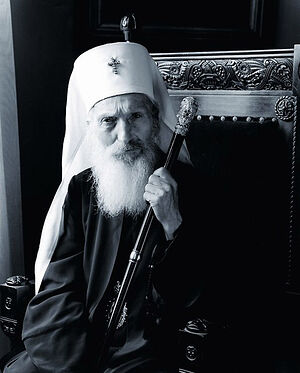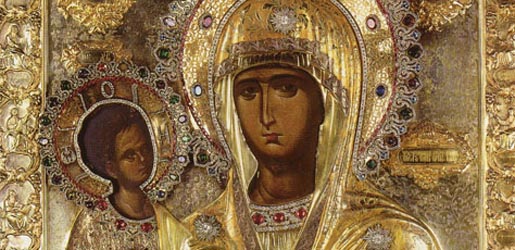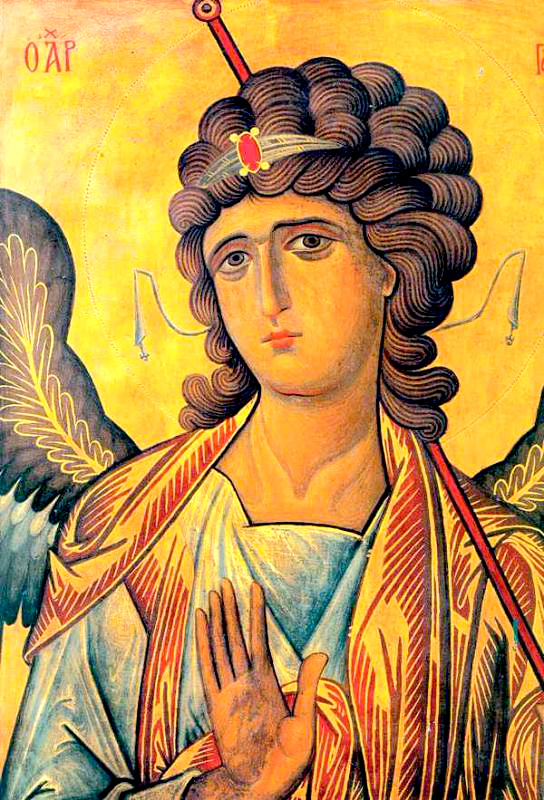Archimandrite Jovan (Radosavlević): Several Episodes from the Life of Patriarch Pavle
 Knowing about the veneration and love that the Orthodox faithful around the world have for Patriarch Pavle of Serbia, we invite readers to get acquainted with several recollections of this bright man, written by Archimandrite Jovan (Radosavlević), a contemporary, companion, and co-struggler with the late Patriarch. In his youth, during the war, he met Gojko Stojčević—the name of the future Patriarch—at a Serbian monastery. From that time, they were linked by a strong friendship, which Fr. Jovan remembers fondly and gratefully. The episodes from the life of Patriarch Pavle that he here acquaints readers with are sad and dangerous, joyful and humorous, showing calmness, trust, and love for Christ and the people, who helped not only the Serbian ascetic and his contemporaries, but also their descendants. Here are a few such episodes.
Knowing about the veneration and love that the Orthodox faithful around the world have for Patriarch Pavle of Serbia, we invite readers to get acquainted with several recollections of this bright man, written by Archimandrite Jovan (Radosavlević), a contemporary, companion, and co-struggler with the late Patriarch. In his youth, during the war, he met Gojko Stojčević—the name of the future Patriarch—at a Serbian monastery. From that time, they were linked by a strong friendship, which Fr. Jovan remembers fondly and gratefully. The episodes from the life of Patriarch Pavle that he here acquaints readers with are sad and dangerous, joyful and humorous, showing calmness, trust, and love for Christ and the people, who helped not only the Serbian ascetic and his contemporaries, but also their descendants. Here are a few such episodes.
Patriarch Pavle : On Guilelessness and Wisdom
 To be truly human in this world is really the same as being a sheep among wolves, for the whole world lieth in wickedness (1 Jn. 5:19). I again say to you, remember: A sheep among wolves is subject to danger from two sides. Firstly, the wolves can tear him apart. But this is in the hands of God. And secondly, a sheep can decide that when you’re surrounded by wolves there is no other way to survive than to become like a wolf, sharpen your teeth, learn how to howl, exchange your hooves for claws, and so from a sheep turn into a wolf. Christ did not send us for this, but so that by our faith and life in the faith we might attract wolves into becoming Christ’s sheep, if they want to.
To be truly human in this world is really the same as being a sheep among wolves, for the whole world lieth in wickedness (1 Jn. 5:19). I again say to you, remember: A sheep among wolves is subject to danger from two sides. Firstly, the wolves can tear him apart. But this is in the hands of God. And secondly, a sheep can decide that when you’re surrounded by wolves there is no other way to survive than to become like a wolf, sharpen your teeth, learn how to howl, exchange your hooves for claws, and so from a sheep turn into a wolf. Christ did not send us for this, but so that by our faith and life in the faith we might attract wolves into becoming Christ’s sheep, if they want to.
Icon of the Mother of God “Of the Three Hands”
 The Icon of the Mother of God, “Of the Three Hands”: In the eighth century during the time of the Iconoclasts, Saint John of Damascus (December 4) was zealous in his veneration of holy icons. Because of this, he was slandered by the emperor and iconoclast Leo III the Isaurian (717-740), who informed the Damascus caliph that Saint John was committing treasonous acts against him. The caliph gave orders to cut off the hand of the monk and take it to the marketplace. Towards evening Saint John, having asked the caliph for the cut-off hand, put it to its joint and fell to the ground before the icon of the Mother of God. The monk begged Our Lady to heal the hand, which had written in defense of Orthodoxy. After long prayer he fell asleep and saw in a dream that the All-Pure Mother of God had turned to him promising him quick healing.
The Icon of the Mother of God, “Of the Three Hands”: In the eighth century during the time of the Iconoclasts, Saint John of Damascus (December 4) was zealous in his veneration of holy icons. Because of this, he was slandered by the emperor and iconoclast Leo III the Isaurian (717-740), who informed the Damascus caliph that Saint John was committing treasonous acts against him. The caliph gave orders to cut off the hand of the monk and take it to the marketplace. Towards evening Saint John, having asked the caliph for the cut-off hand, put it to its joint and fell to the ground before the icon of the Mother of God. The monk begged Our Lady to heal the hand, which had written in defense of Orthodoxy. After long prayer he fell asleep and saw in a dream that the All-Pure Mother of God had turned to him promising him quick healing.
Holy Archangel Gabriel
 Synaxis of the Holy Archangel Gabriel: The Archangel Gabriel was chosen by the Lord to announce to the Virgin Mary about the Incarnation of the Son of God from Her, to the great rejoicing of all mankind. Therefore, on the day after the Feast of the Annunciation, the day on which the All-Pure Virgin is glorified, we give thanks to the Lord and we venerate His messenger Gabriel, who contributed to the mystery of our salvation.
Synaxis of the Holy Archangel Gabriel: The Archangel Gabriel was chosen by the Lord to announce to the Virgin Mary about the Incarnation of the Son of God from Her, to the great rejoicing of all mankind. Therefore, on the day after the Feast of the Annunciation, the day on which the All-Pure Virgin is glorified, we give thanks to the Lord and we venerate His messenger Gabriel, who contributed to the mystery of our salvation.
Gabriel, the holy Archistrategos (Leader of the Heavenly Hosts), is a faithful servant of the Almighty God. He announced the future Incarnation of the Son of God to those of the Old Testament; he inspired the Prophet Moses to write the Pentateuch (first five books of the Old Testament), he announced the coming tribulations of the Chosen People to the Prophet Daniel (Dan. 8:16, 9:21-24); he appeared to Saint Anna (July 25) with the news that she would give birth to the Virgin Mary.
The Holy Great-martyr Procopius of Caesarea in Palestine (303)
Procopius was born in Jerusalem of a Christian father and a pagan mother. At first his name was Neanias. Following the death of his father, his mother raised her son completely in the spirit of Roman idolatry. When Neanias had grown up, Emperor Diocletian saw him, took a liking to him, and brought him to his palace for military service.
When this wicked emperor began to persecute Christians, he ordered Neanias to go to Al- exandria with a garrison of soldiers in order to exterminate the Christians. But on the way, there happened to Neanias something like that which once happened to Saul. In the third hour of the night there was a strong earthquake and, at that moment, the Lord appeared, and a voice was heard: “Neanias, where art thou going, and against whom art thou rising up?” In great fear, Neanias asked: “Who art Thou, Lord? I am unable to recognize Thee.” Then there appeared in the air an exceedingly luminous cross, as of crystal, and from the cross came the voice: “I am Jesus, the crucified Son of God.” And the Lord further said to him: “By this sign that you have seen, conquer your enemies, and My peace will be with you.”
Commander Neanias’s life was completely changed. He issued an order to make a cross such as he had seen, and instead of going against the Christians, he and his soldiers used their force against the Hagarenes, who were attacking Jerusalem. He entered Jerusalem as a victor, and revealed his Christian faith to his mother. Brought before the court, Neanias removed his commander’s belt and sword, and threw them before the judge, thereby showing that he was a soldier only of Christ the King. After being tortured extensively, he was cast into prison. There the Lord Christ appeared to him again, baptized him, and gave him the name Procopius. One day twelve women appeared before his prison window and said to him: “We too are servants of Christ.” Accused for this, they were thrown into that same prison. St. Procopius taught them the Faith of Christ, and prepared them to receive their “martyr’s crowns.” (This is why St. Procopius, along with the God-crowned Emperor Constantine and Empress Helena, is mentioned in the order of crowning during the wedding ceremony.) Subsequently, the twelve women were brutally tortured. Witnessing their suffer- ing and bravery, the mother of Procopius also came to believe in Christ, and all thirteen were slain.
When St. Procopius was led to the scaffold, he raised his hands toward the east and prayed to God for all the poor, the needy, the orphans and the widows, and especially for the Holy Church, that it would grow and spread, and that Orthodoxy would shine to the end of time. And from heaven it was made known to him that his prayers were heard, after which he joyfully laid his head under the sword and went to his Lord in eternal joy. St. Procopius suffered honorably at Caesarea in Palestine, and was crowned with a wreath of immortal glory, on July 8, 303, and with him Martyrs Theodosia (his mother), tribunes Antiochus and Nicostratus, and twelve women of senatorial rank.






